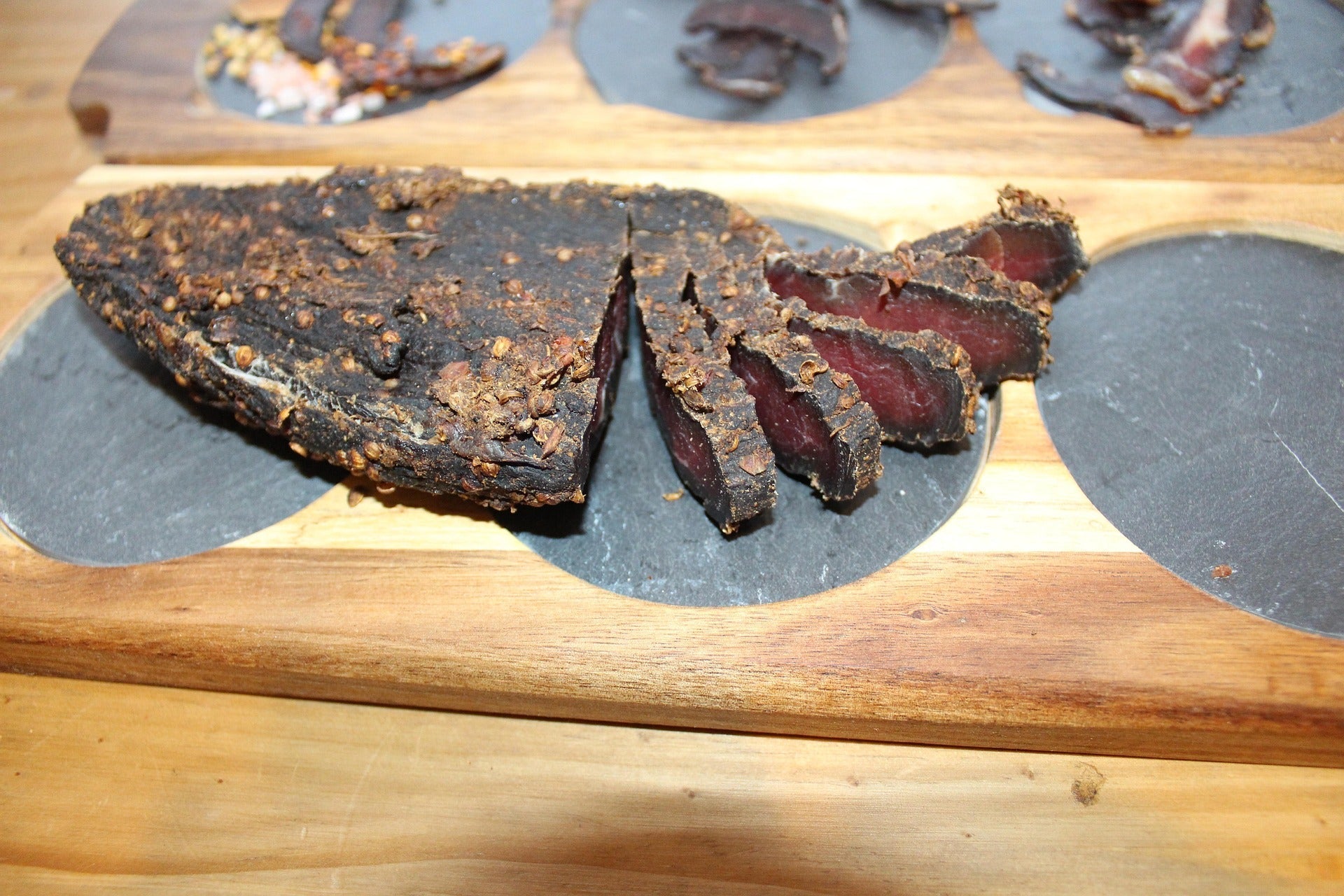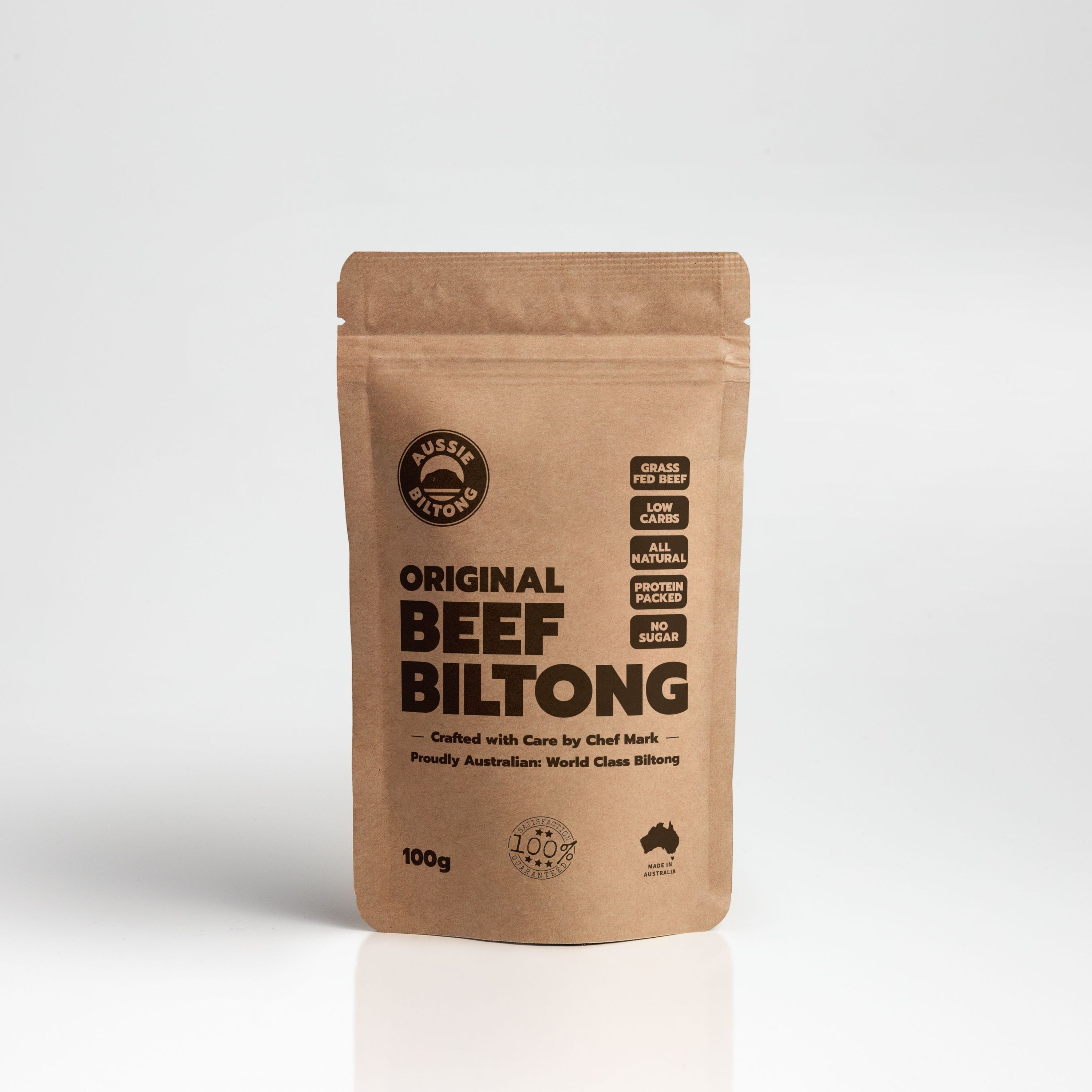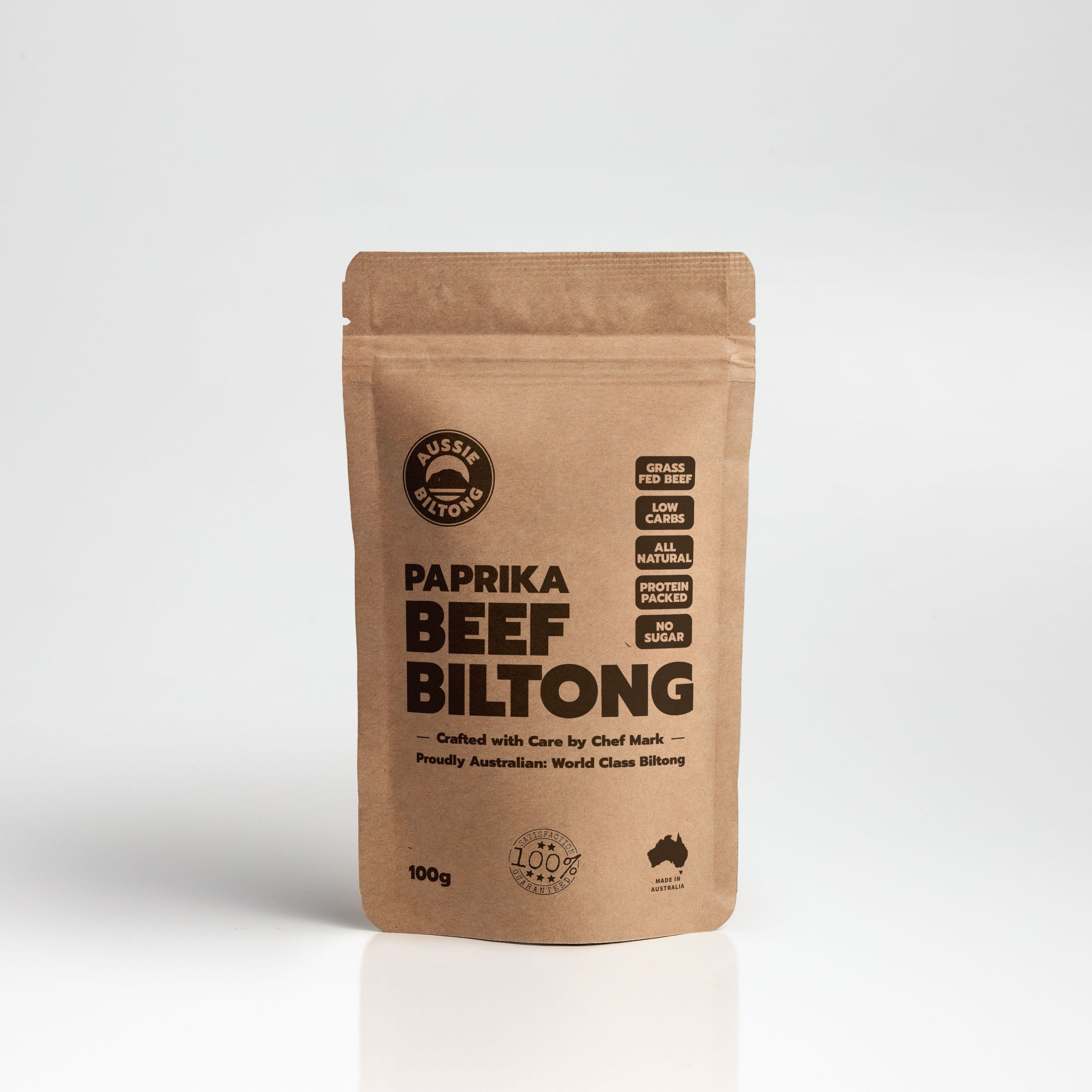

· By Aussie Biltong
What’s the Difference Between Biltong and Jerky?
At first glance, they look like cousins. Both are dried strips of beef. Both are seen as handy, high protein snacks you can eat anywhere at the gym, on a hike, or at your desk.
But bite into them and you’ll know they’re worlds apart. So, what is the difference between jerky and biltong?
It comes down to how they’re made, how they taste, and even how your body feels after eating them.
We're going head first into the biltong vs jerky debate.
Biltong vs Beef Jerky: Origins and History
Jerky has its roots in North and South America. The word comes from “ch’arki,” a Quechuan word meaning “dried meat.” Native people dried thin strips of game over fires to make food last for weeks without refrigeration.
Later, settlers adopted the method, adding smoke and salt. That’s how the jerky we know today was born.
Biltong tells a different story. It came out of South Africa in the 17th century.
Dutch settlers needed a way to preserve beef on long treks inland. Instead of fire, they used vinegar and spices like coriander and pepper. Meat was cut into thick slabs, cured, then hung to air-dry naturally.
The result? Tender, flavour-rich strips that lasted through long journeys.
So while jerky was shaped by smoke and survival, biltong was shaped by spice and patience. Two different worlds, two different results.
Preparation and Drying Methods
This is where the difference between jerky and biltong really shows.
Jerky is made by marinating lean strips of beef and then drying them with heat, usually in an oven, smoker, or dehydrator.
The process is quick, but it often relies on preservatives, sugar, or artificial flavours to balance out what’s lost in cooking.
Biltong, on the other hand, is slow food. Meat is marinated in vinegar and rubbed with natural spices. Instead of cooking, it’s left to hang in controlled airflow for several days. The air does the work, drawing out moisture while locking in flavour. No heat, no shortcuts. Just patience.
This method also allows for thicker cuts. While jerky sticks to thin strips, biltong can be chunky, fatty, or lean depending on preference. That’s why every bite of biltong feels more substantial.
It’s the same method we use to craft our Aussie Original Beef Biltong: clean ingredients, traditional air-drying, no artificial nasties.
Texture and Appearance
Here’s something you’ll notice straight away: jerky is tough. Thin and dry, it takes some serious jaw work. That’s why you’ll often see people chewing jerky for ages, almost like leather.
Biltong is different. Because it’s cut thicker and dried more slowly, it keeps more natural fat and juices. The result is softer, richer, and more tender. You can bite through it without feeling like you’re in a jaw-wrestling contest.
Biltong also looks different. The vinegar cure gives it a deep, almost wine-dark colour. Fat marbling is more visible too, which adds flavour.
Flavour Profiles
Flavour is where the biltong vs jerky debate heats up.
Jerky flavours are usually smoky, salty, and sometimes sweet. That’s because smoke, soy sauce, and sugar are often part of the marinade. It’s tasty, but it can feel one-note after a while.
Biltong hits differently. Vinegar brings a tang, coriander and pepper add bite, and extra spices (like chilli or paprika) kick things up a gear. The air-drying keeps the natural beef flavour front and centre, instead of masking it.
That’s why fans often say jerky tastes “processed,” while biltong tastes “real.”
And with biltong, variety is endless. You’ve got everything from mild, traditional cuts to hot, spice-loaded blends. Fancy smoky depth? Jerky’s got you covered. Want a bold, zesty snack that feels fresh? Biltong wins.
Nutritional Value
Let’s be real: both biltong and jerky are healthier than chips or lollies. They’re protein-packed snacks that fit into a busy lifestyle. But dig into the labels, and the gap widens.
Jerky often includes added sugar, MSG, and liquid smoke. It’s also made from very lean cuts, which lowers fat but can make it less satisfying.
Biltong, being air-dried, doesn’t need preservatives or artificial flavouring. It’s usually higher in protein per serve, and because fat isn’t always trimmed away, it’s more filling. That’s why athletes and gym-goers love it more sustained energy, less crash.
So, the difference between jerky and biltong, nutrition is one of biltong’s biggest wins.
Variety and Availability
One reason jerky dominates worldwide is simple: scale. It’s mass-produced, packed, and sold in supermarkets, service stations, and airports. You can grab a bag almost anywhere.
Biltong is different. For years, it was mainly found in South African communities. But now, thanks to Aussie producers (such as Aussie Biltong ;] ), it’s breaking into the mainstream.
Biltong vs Jerky: Which Is Better?
So, the big question: biltong vs jerky, which should you choose?
If you want something chewy, smoky, and familiar, jerky is fine. It’s been around for centuries and has its loyal fans.
But if you’re after something richer, more tender, and more natural, biltong takes the win. It’s flavourful, higher in protein, and doesn’t rely on artificial extras.
Why We Choose Biltong
We believe in keeping things real. No fake smoke. No sugar overload. No shortcuts. Just air-dried beef, natural spices, and bold flavour.
For Aussies deciding between biltong or jerky, the choice is simple. Biltong gives you more flavour, more tenderness, more clean fuel for your day.
And that’s exactly why we make it. Whether you’re into spice or tradition, our biltong is crafted the same way it’s been made for centuries, only fresher, and right here in Australia.

